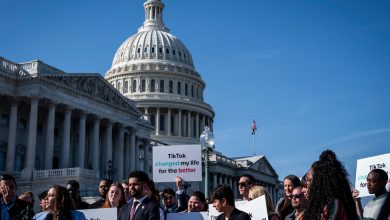Poland Uses Water Cannons and Tear Gas as Tensions Rise at Belarus Border

WARSAW — The Polish authorities said that border guards used water cannons and tear gas on Tuesday to repel what they said was an attempt by migrants moving en masse from Belarus to breach the heavily guarded frontier.
Tensions have been building along the European Union’s eastern front for weeks as thousands of migrants, mainly from the Middle East, have flown to Belarus in the hope of finding a path into the bloc. The E.U. member states that share a border with Belarus — Latvia, Lithuania and Poland — have accused the government of Aleksandr G. Lukashenko, the Belarus leader, of orchestrating what they say is a “hybrid attack” using human beings as weapons.
After several nights of tense standoffs, tensions flared on Tuesday morning.
The Polish authorities, in a series of Twitter messages, said that border guards at the Kuznica-Bruzgi crossing had been assaulted by people throwing “stones, bottles and logs” and firing “stun grenades.”
“The entire aggressive behavior is coordinated by Belarusian services and monitored by drones,” the Polish authorities said, posting videos of the confrontations. “As a result of an attack by people inspired by the Belarusian side, one of the policemen was seriously injured.”
The officer was being treated at a hospital for what was believed to be a skull fracture, the authorities said.
Since the Polish government has banned journalists from reporting at the border, it was impossible to verify the authorities’ claims or the veracity of the scores of videos that appeared on social media purporting to show snippets of the confrontation.
The Lukashenko government has denied allegations, including from the United States, that it has engineered the crisis and is directing the movement of the migrants.
“We cannot let this so-called problem lead to heated confrontation,” Mr. Lukashenko told a government meeting on Tuesday, according to Belta, the state news agency.
“The main thing now is to protect our country and our people, and not to allow clashes,” he added.
The number of migrants at the border started to grow after Belarus eased its visa rules in August. Western leaders say that Mr. Lukashenko — who is facing E.U. sanctions for his brutal crackdown on the political opposition and the forcing down of a Ryanair flight over Belarus to arrest a dissident journalist — is using migrants to gain leverage over the bloc.
Since the migration crisis of 2015, when more than a million migrants and asylum seekers tried to enter the European Union, the bloc has tightened border controls and declared that uncontrolled migration is no longer possible.
But the issue remains potentially explosive, and Poland’s nationalist government, which has been steadily losing support in the polls, has moved to seize on the moment.
Poland’s chief central banker, Adam Glapinski — a longtime friend and ally of Poland’s de facto leader Jaroslaw Kaczynski — announced this week that the National Bank of Poland would issue a collectors’ note and coin dedicated to the “defense of the Polish eastern border.”
Understand the Belarus-Poland Border Crisis
A migrant crisis. Gatherings of migrants along the European Union’s eastern border have led to an escalating standoff between Belarus and the E.U. Here’s what to know:
How it began. A growing number of migrants fleeing poverty and war have been trying to enter E.U. countries such as Poland and Lithuania from Belarus over the past few months. A sharp rise was detected after the E.U. imposed sanctions on Belarus in May.
European accusations against Belarus. E.U. leaders claim that Aleksandr G. Lukashenko, the autocratic leader of Belarus, has engineered the crisis to punish European countries for harboring his opponents and imposing sanctions.
The confrontation. The Polish government has been particularly forceful in its attempts to keep people out, sending thousands of soldiers into the frontier zone. The hard-line policy has played well with Poland’s right-wing nationalists.
Fears of a humanitarian crisis. The migrants are stranded in the thick forests that straddle the border, facing bitter cold and an approaching winter. They are unable to enter the European Union or go back into Belarus. Several have already died from hypothermia.
Russia’s role. President Vladimir V. Putin of Russia has emerged as Belarus’s most important backer. Russia has blamed the West for stoking the migration crisis and agreed to deploy nuclear-capable bombers to patrol the border zone.
Mr. Kaczynski recently announced a meeting in Warsaw next month for like-minded right-wing leaders — including Victor Orban of Hungary and Matteo Salvini of Italy — to discuss the future of the European Union and the need for stronger emphasis on national sovereignty and “traditional values.”
The border crisis comes as relations between Brussels and Warsaw have tanked, with the European Union accusing the Polish government of undermining the rule of law and dismantling the independence of the judiciary.
But as the migrant crisis has grown, the bloc has lent its full support to Poland and the other nations on its eastern border.
With Russia lending support to Belarus, the humanitarian crisis unfolding at the border threatens to spiral into a broader regional conflagration. And as colder temperatures begin to grip the region, there are fears of further tragedy among the migrants, with thousands of men, women and children stranded in freezing conditions between the razor wire and border guards.
Anatol Magdziarz contributed reporting from Warsaw.




